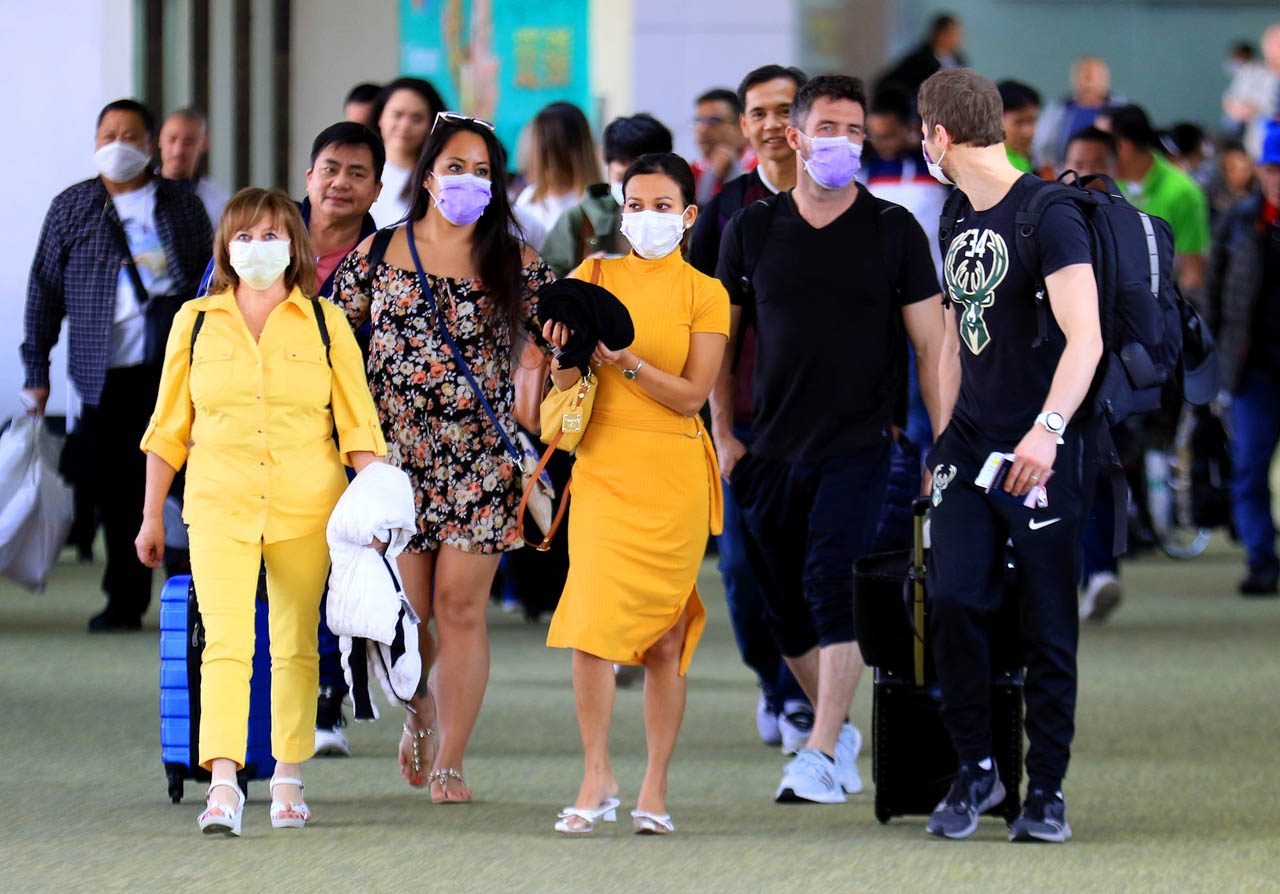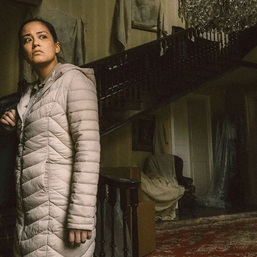SUMMARY
This is AI generated summarization, which may have errors. For context, always refer to the full article.

MANILA, Philippines – Reports of the novel coronavirus (2019-nCoV) that has caused pneumonia-like illness in China and parts of Asia and North America have revived fears of an outbreak akin to the SARS (severe acute respiratory disease) scare of 2003.
So far, 25 have died, most of them found to have pre-existing illnesses. A total of 881 cases have been recorded, over 400 of them in the Chinese city of Wuhan, the disease’s epicenter. Wuhan is currently a city on lockdown, with flights to and from the city having been cancelled since Thursday, January 23. In the city, a university town of 11 million, students have been advised not to leave their rooms. Metro services have also been halted indefinitely and passenger boats and buses are being turned away as authorities scramble to contain the disease. (READ: ’Novel coronavirus’ or 2019 nCoV: What we know so far)
Much is still unknown about the new coronavirus. Health officials in China suspect that the virus may have come from a seafood market known for selling wild animals. Human-to-human transmission is also possible, though not yet definitively confirmed.
The World Health Organization (WHO) convened a council meeting on Thursday, Janaury 23, and decided not to declare the Wuhan outbreak a public health emergency of international concern for now. “This is an emergency in China, but it has not yet become a global health emergency,” the WHO director-general said.
This situation does not come without precedent. In 2003, over 800 were died in China and Hong Kong after SARS spread from the two countries to neighboring places like Vietnam to as far as Canada and the United States. The crisis then lasted for 5 months, from March 2003, when the WHO issued a global alert, to July 2003, when finally the last case was reported and contained in Taiwan.
In the Philippines, SARS claimed two deaths that year – a Filipino nursing assistant visiting from Canada and her father, whom she had infected. A total of 14 cases were recorded in the country, making it the lowest count among 30 countries affected by the disease. How did the Philippines handle it then? What might we learn from the SARS crisis in case a similar one hits this time around? Rappler speaks to former health secretary Manuel Dayrit, who headed the health department during the SARS crisis of 2003.

There are protocols in place. In case the 2019-nCoV outbreak spreads outside of China and reached the Philippines, the DOH has protocols in place dating back to the SARS crisis in 2003. The SARS crisis was unprecedented, Dayrit said, but they weren’t completely in the dark as there were guidelines set after the 1960s cholera outbreak, for example. The DOH now is saying that in the event that a case of 2019-nCoV is confirmed in the Philippines, it will “activate the infrastructure the government already has.” This infrastructure was one that Dayrit helped build.
“The first step is you try to prevent entry or identify those who enter and may be infected,” he said. “Now that’s a huge challenge, because there are thousands of people who are traveling every day.” It’s important, Dayrit said, to know the criteria, which DOH, through its Bureau of Quarantine (BOQ) is now using when screening passengers traveling from China:
- there must be travel history to Wuhan and China and a history of working at hospitals there;
- there must have been contact with someone carrying the virus; and
- there must be symptoms of respiratory illness like coughing, colds, sneezing, fever, and difficulty breathing.
If a person meets these criteria, health officials then have to do the necessary laboratory exams, which start with throat swabs and blood samples. If they turn up positive, the patient is isolated and given clinical care. “First you do surveillance, then you do case detection, and then you do clinical care of the patient,” Dayrit said. “That’s the protocol on the individual level.”
“If you think about it from the point of view of a country, you have to be able to be prepared to have those protocols ready everywhere as much as possible, and therefore you’re looking at the places where likely infections are gonna come in,” he added. This means monitoring ports of airports and seaports of entry, especially major travel hubs with international airports like Manila, Cebu, Davao, Iloilo, and Bohol. “You have to make sure that in those places you have the capacity to detect, the capacity to isolate, and the capacity to treat,” Dayrit said.
“We’re far, far more prepared now than we were in 2003 for this type of problem,” Dayrit thinks. “This is because the infrastructure has been built up. So when DOH says we’re activating the protocols, it means, everything that’s already been built up from the time that we encountered this problem with SARS, we’re doing now.”
Local government matters. Dayrit recalls how during the SARS crisis, people were so scared that a mayor once refused to let an ambulance carrying a SARS patient pass through their area of jurisdiction to be able to reach the hospital it needed to go to. This, according to Dayrit, highlights the importance of cascading information about the disease and the virus down to the local level.
“You have to function as a team, otherwise, things start getting bogged down,” Dayrit said. This means coordiation with local executives, health workers at the local level, and the man on the street.
During the SARS crisis, networks of epidemiological surveillance units were established in regions, provinces, cities, and municipalities. Health and local government personnel down to the barangay level were also briefed on information about the virus and the disease. Special hospitals, including the Research Institute for Tropical Medicine, San Lazaro Hospital, the Lung Center of the Philippines, and DOH regional hospitals were designated as SARS hospitals.
The DOH confirmed to Rappler that regional health offices are making sure that local governments are briefed enough about the disease in case it becomes an emergency.
As for the man on the street, Dayrit said one should ask, “What’s the likelihood that I’m going to be infected by somebody who’s come from China and has the disease?”
“If there’s critical awareness of your risk and if you know that it might be very low, then you can go about business as usual,” he said. But this is no reason to be complacent, he said. “The threat is there. If it’s a novel virus, then there are going to be people who are going to encounter it that will not have defenses, that’s why people have died. But if you look at it, eventually, we’ll overcome it over time. I think the challenge is to overcome it with minimal casualties.”
There will be a ‘virus’ of fear and panic. The public didn’t know how to react to the SARS emergency then, Dayrit said. People refused to travel, people started panic-buying, flights were virtually empty. There was also a “virus of fear and panic,” as Dayrit would call it. “Fear and panic often traveled much faster than the virus itself then,” he said.
“When you think about these things, particularly if you are managing the situation, you have to take care to react appropriately– not to underreact, have a cavalier attitude, and be complacent, but not to overreact either,” said the former health secretary.”
Dayrit looks back on the health department’s communication strategy then as a success, having conveyed the news in a “consistent and accurate” way. “I’d like to think that our approach had a calming influence on the public,” he said. Besides, then, the major sources of information were TV, radio, and newspapers.
“I think the difference now is there’s a lot more fragmentation of the news and there’s social media,” Dayrit said. There have been false reports concerning the current 2019-nCoV crisis circulating online, including a Facebook post claiming that SARS was spreading in a mall in Mandaluyong, and a chain message saying there were confirmed cases of the virus in PBCom Tower in Makati. The DOH have since said that both reports were false.
Dayrit also said this new landscape of news – with traditional sources and social media – “creates a whole different cycle or ecology of how news is handled and sought.” He thinks because information can be accessed so swiftly nowadays, people just want a constant stream of information on their screens.
“There is a danger to do very irrational things because it’s driven by fear that’s in turn driven by a constant stream of information,” he cautioned. The government can counter this by disseminating public information and health advisories that may control fear and panic, like advisories that show precautionary measures in the event of viral infection, as the DOH did during Dayrit’s time.
Right now, as it investigates the case of a 5-year-old in Cebu and monitors other people that exhibit respiratory infection, the DOH is reminding the public to practice proper hygiene and coughing etiquette to curb the spread of viral diseases.
Health Secretary Francisco Duque III has also said that there were still “many blindspots” concerning the new virus, allaying fears that 2019-nCoV is certainly as threatening as the virus that caused SARS years ago. There is still much about the virus that scientists have yet to determine, and technology to detect the virus in people is so far limited. But the DOH expects to build its capacities soon, after it acquires samples of the virus from China to be able to conduct laboratory exams here.
It’s a question of preparedness, Dayrit said. “Even if you’ve set your defenses up, there’s always a possibility that you’ll be overrun, just by the sheer number of cases.” It doesn’t hurt to expect the worst. As DOH now said, “We need to think it [the virus] is coming so we can be prepared.” – Rappler.com
Add a comment
How does this make you feel?















There are no comments yet. Add your comment to start the conversation.